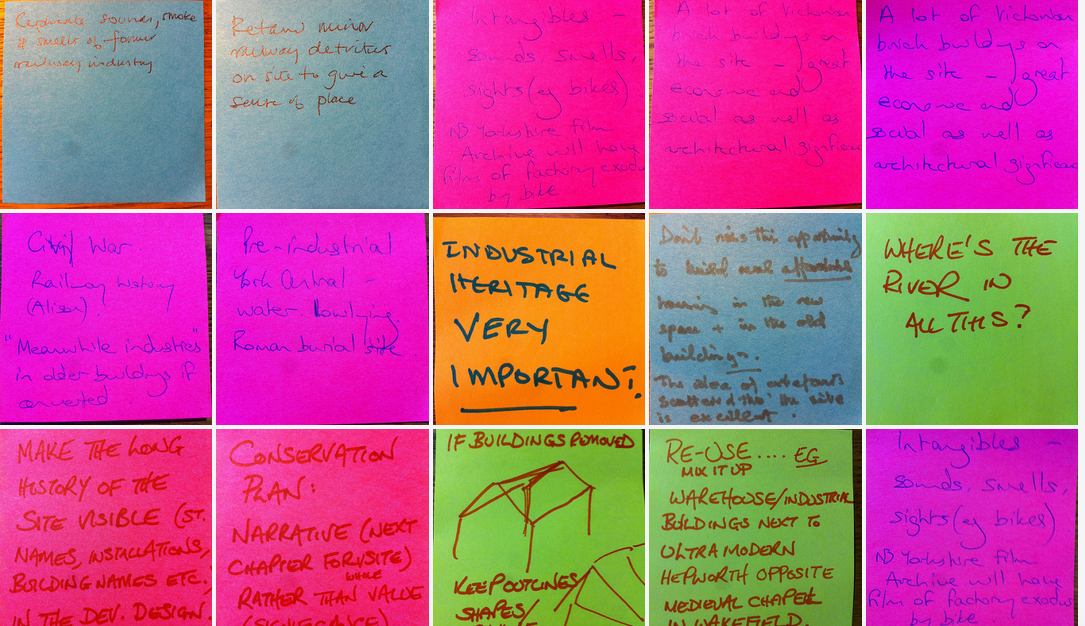
Thursday 12th April 2018
What possibilities for understanding York’s history are offered by York Central? John Oxley, City Archaeologist for the City of York Council explored the ‘Archaeological Possibilities’, what evidence for prehistoric, Roman, medieval, Civil War, and railway deposits might be present under the ground of the railway siding and buildings might there be? Architectural Historian Alison Sinclair, outlined the Legacy of Railway Buildings on the site, what were they used for, their importance in the industrial history of the City, and suggests how might they be repurposed in the new development.
John Oxley, ‘Archaeological Possibilities’
Alison Sinclair, ‘York Central: The Legacy of Railway Buildings’
We then opened up for discussion:
Leeman Road / Thief Lane: the historic route into town
‘I am worried about cutting of Leeman Road; what is the relationship of Leeman Road today with Thief Lane?’
‘Thief Lane was diverted when new railway station built to line of current road’.
‘The new NRM link building will destroy the historic route into town’.
Pride in Industry: Social History
‘The cultural connection is important, there is a sense of pride in industry, we need to maintain this for future generations. I want my children to know they are living in a railway area’
‘Yes, it is about social history as well as bricks and mortar’.
‘York’s industry and working class social history is hidden – there is pride in it but it’s not valued; there should be pride in that industry. “We don’t want York to be an expensive tourist trap”.
“Council seemed desperate to get rid of blue collar jobs”.
‘rail industry has relocated to places with engineering history but not railway engineering’.
We have to remember the scale of employment – the cyclists at closing time. How can we capture that – WW silhouettes?
Is there any other housing which has links with the railways? Dave – yes, all around this part of the city.
Reuse of buildings
‘Can these buildings can be reused? Can we create a “sticky” site?’
‘Autohorn leaving foundry building. Can we find meanwhile uses which keep buildings in use?’
‘There can be nervousness about occupancy tying up futures of buildings’.
Queen Street Bridge
‘Queen Street Bridge overlooks and marginalises the Railway Institute. The bar in the RI has just closed. So there is choice to be made between RI and the bridge and I choose the RI”.
Sense of Place
‘Can we retain the small detailed stuff, which give sense of place?’
‘the landscape architects are “hooked on the place”’
‘But is this subject to costs’. The example of rebuilding of great hall was given where there was ‘a complete loss of railway engineering history’.
‘How far back into deep time do you go? “Without the glaciers, this wouldn’t be here at all”. The value of the kettle holes etc’.
‘Can we document the small stuff collectively? What public benefit can there be?’
John commented that in other recent excavations they have been professionally-led, community-staffed exercise in surveying/recording. There are people out there at different levels of engagement. How is it all brought together and made public?
How can we reuse the rails that are on the site?
Can we park cars at the edge of the site and use the tracks to move people across it?
Shaping the future?
We ended by asking our speakers to reflect on how the histories and hertiage we discussed should this shape the future.
Alison: Continuity is really important.
John:- There is a professional process underway, but another question is intangible heritage – sounds and smells, the stories of people which resonate among communities. How do we capture these and use them to inform development?
A community heritage group?
We ended by exploring whether we should we form a huge community heritage group to do the public documentation, research, events and archaeology. More on this soon!